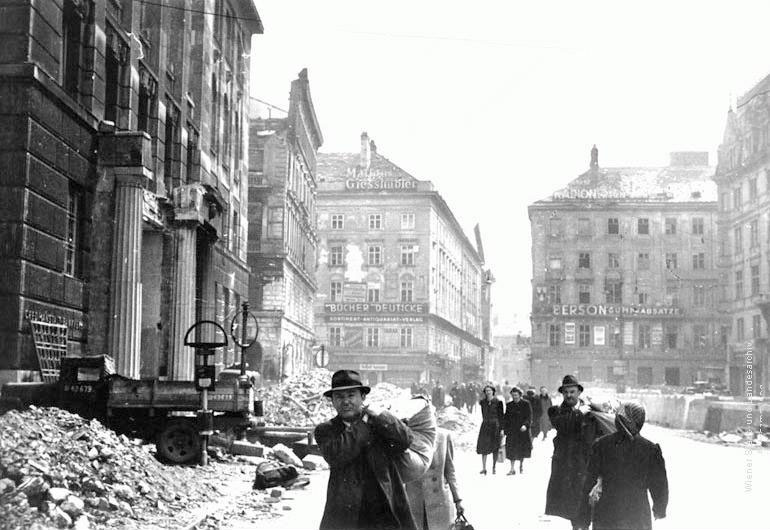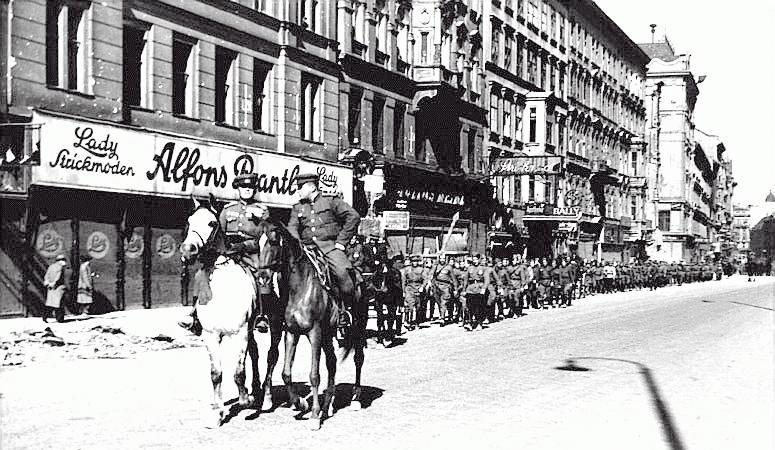The years of the Allied Forces in Vienna (1945 to 1955) - History of Vienna
Occupation
Within days of the end of the fighting, i.e. in April 1945 still, the provisional city government was constituted and the political parties re-emerged. The situation of the city was far from encouraging. More than 20 percent of the housing stock was partly or completely destroyed, almost 87,000 flats had become uninhabitable. In the urban area, more than 3,000 bomb craters were counted, many bridges were in shambles, sewers, gas and water pipes had suffered severe damage. The imperative of the immediate afterwar period was to solve the most basic problems and get the city back to some degree of working order. The political context was no less complicated. The Allied Occupation Forces refused to accept the Nazis' territorial expansion. The bottomline was that those districts which had existed until 1938 were divided into four Allied zones. The inner-city district was administered by all four powers, as the so-called "Inter-allied Zone". Districts 22 - 26, namely the 97 Lower Austrian communities which had been merged with Vienna in October 1938, were considered to form part of Lower Austria and came under Soviet control.
Return to Democracy
In November 1945 the first City Council elections were held in Vienna, and the city was restored to democracy. The 100 seats of the Vienna City Council were divided among the Socialists (58 seats), the People's Party, or Conservatives (36 seats), and the Communists (6 seats). The first and foremost priorities of the new city government were to ensure welfare programmes for the young and the elderly, to repair the city-owned utilities and rebuild the city - altogether a programme that continued essentially until the early 1960s.
As early as 1946 the so-called "Territorial Review Act" (Gebietsänderungsgesetz) was passed, aimed at more or less repealing the 1938 expansion of the city. Approval by the Allied Occupation Forces was withheld for eight years, since the Soviet forces in particular baulked, so that it did not come into effect until 1954. Since then the urban area has comprised 23 districts. Compared to the pre-1938 situation, the territory that now forms the 22nd district north of the Danube and the 23rd district at the southern extremity of the urban area has been part of Vienna. A year later, in May 1955, the country was restored to freedom through the conclusion of the "Austrian State Treaty" ("Staatsvertrag"). In Vienna the economy took a decisive turn for the better, not least as a result of assistance granted under the Marshall Plan but also because confiscations of industrial property by the Soviets ceased.
City of Vienna | Municipal and provincial archives of Vienna
Contact form


